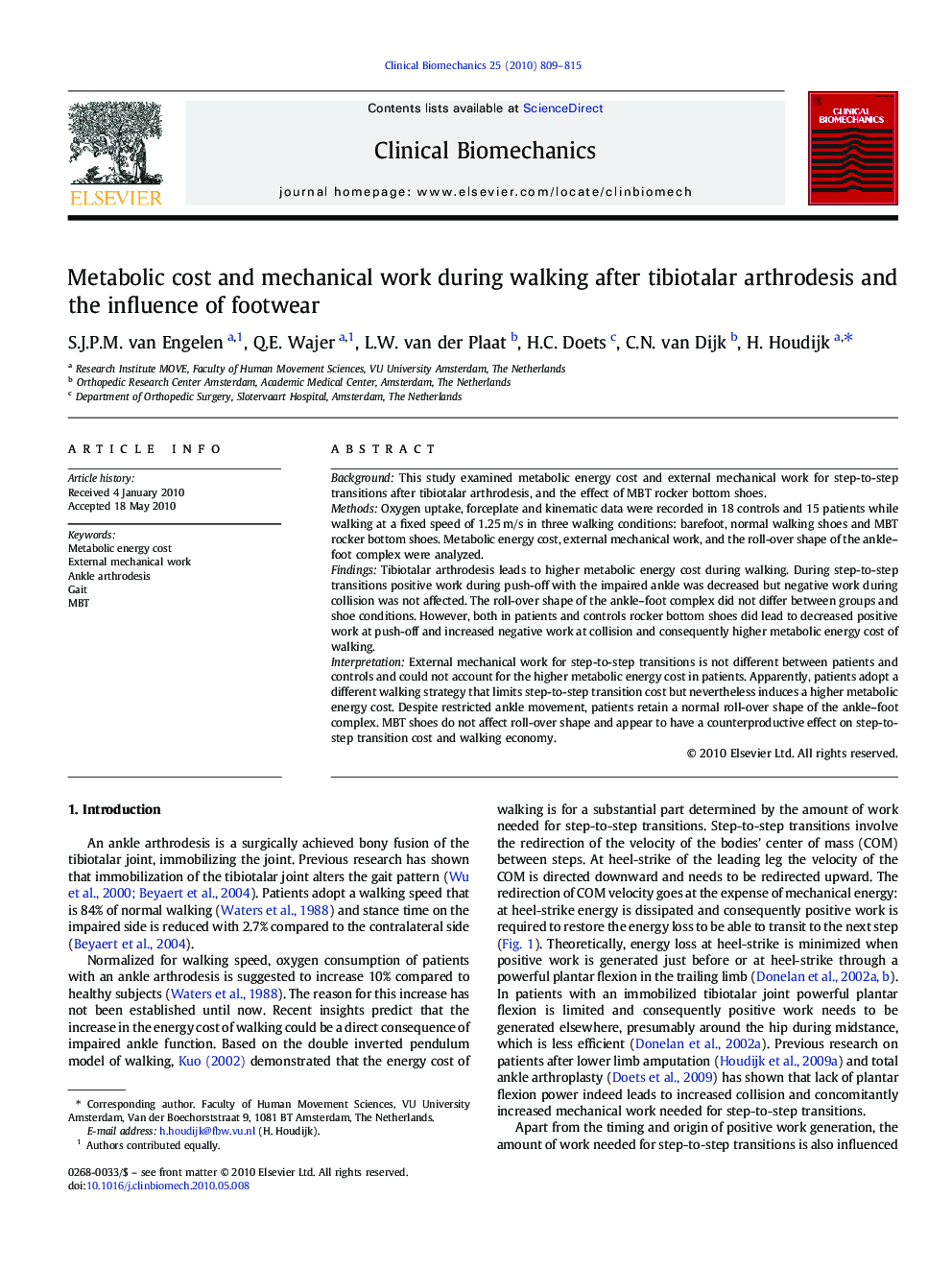| Article ID | Journal | Published Year | Pages | File Type |
|---|---|---|---|---|
| 4050601 | Clinical Biomechanics | 2010 | 7 Pages |
BackgroundThis study examined metabolic energy cost and external mechanical work for step-to-step transitions after tibiotalar arthrodesis, and the effect of MBT rocker bottom shoes.MethodsOxygen uptake, forceplate and kinematic data were recorded in 18 controls and 15 patients while walking at a fixed speed of 1.25 m/s in three walking conditions: barefoot, normal walking shoes and MBT rocker bottom shoes. Metabolic energy cost, external mechanical work, and the roll-over shape of the ankle–foot complex were analyzed.FindingsTibiotalar arthrodesis leads to higher metabolic energy cost during walking. During step-to-step transitions positive work during push-off with the impaired ankle was decreased but negative work during collision was not affected. The roll-over shape of the ankle–foot complex did not differ between groups and shoe conditions. However, both in patients and controls rocker bottom shoes did lead to decreased positive work at push-off and increased negative work at collision and consequently higher metabolic energy cost of walking.InterpretationExternal mechanical work for step-to-step transitions is not different between patients and controls and could not account for the higher metabolic energy cost in patients. Apparently, patients adopt a different walking strategy that limits step-to-step transition cost but nevertheless induces a higher metabolic energy cost. Despite restricted ankle movement, patients retain a normal roll-over shape of the ankle–foot complex. MBT shoes do not affect roll-over shape and appear to have a counterproductive effect on step-to-step transition cost and walking economy.
